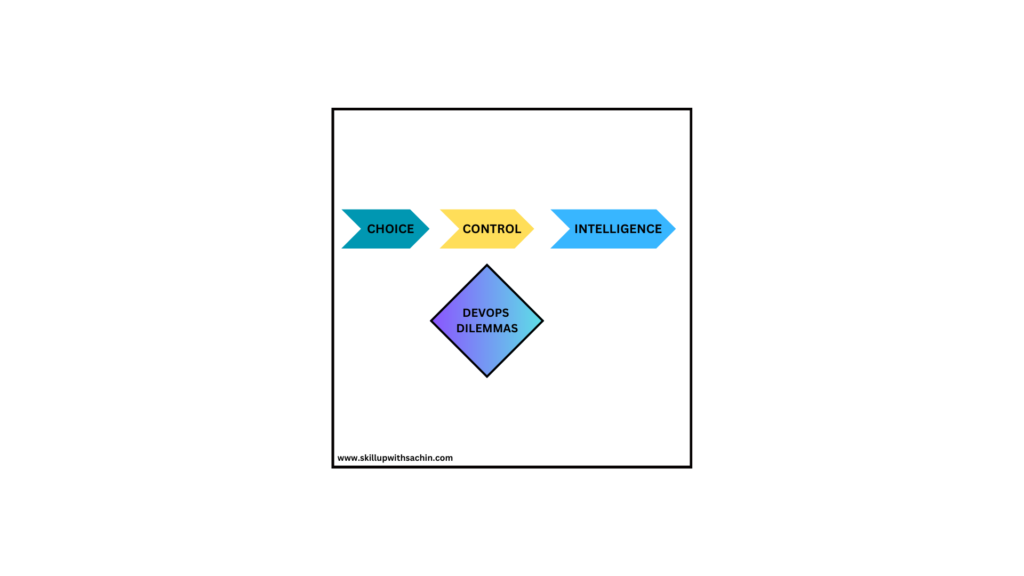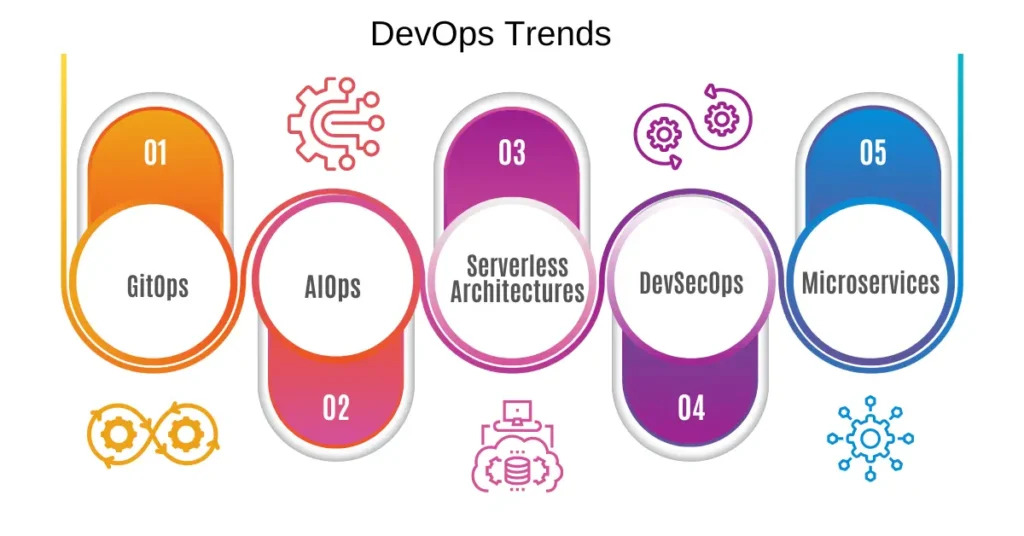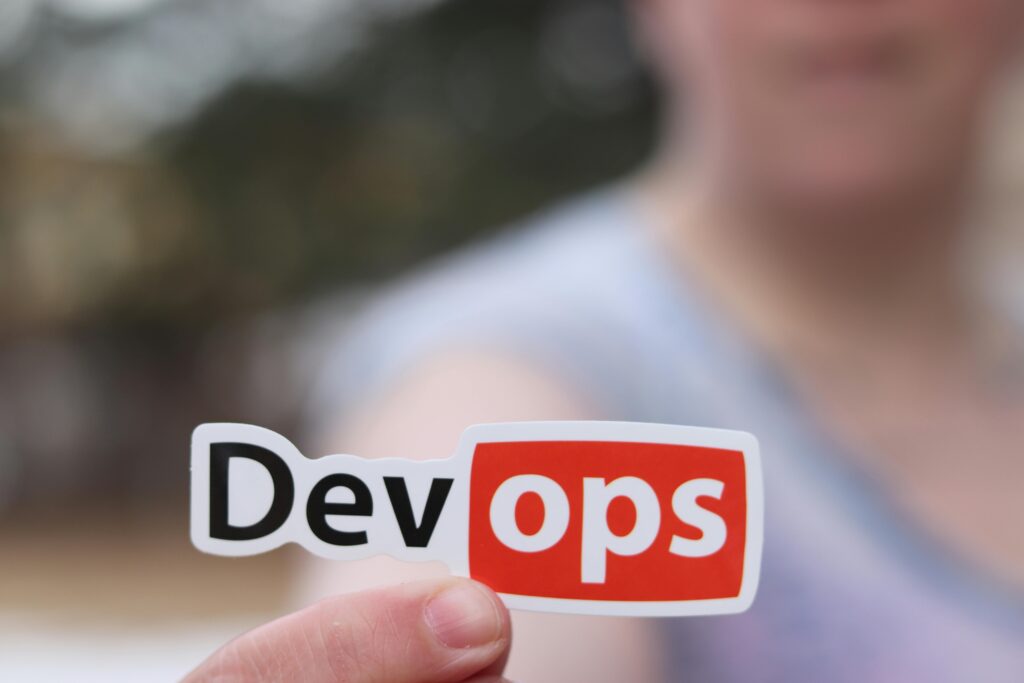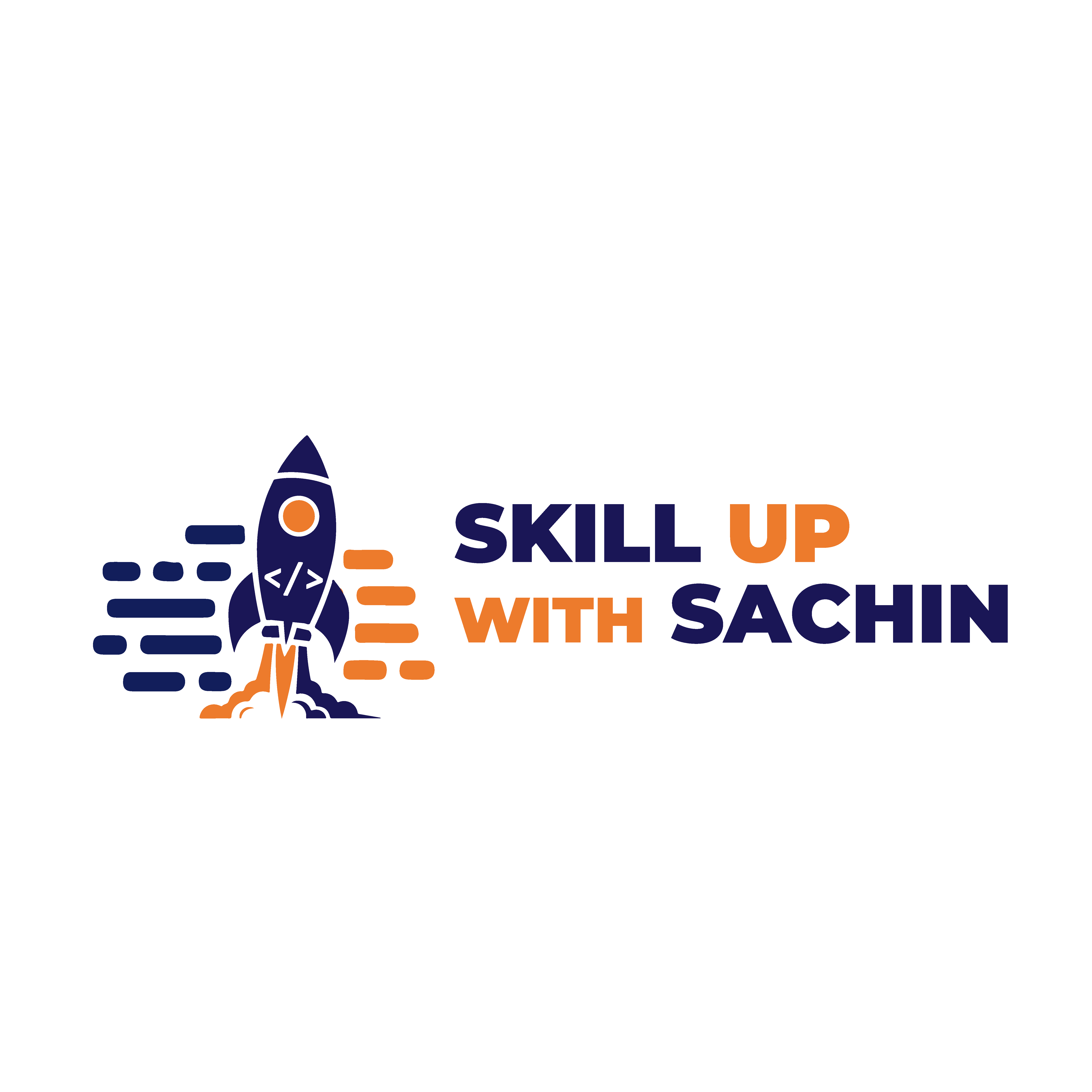The Three Dilemmas : Choice, Control & Intelligence – DevOps Leaders Face When Scaling Continuous Delivery Pipelines

In the age of digital transformation, scaling continuous delivery (CD) pipelines has become essential for businesses striving for agility and competitiveness. However, DevOps managers often find themselves in a balancing act, facing multiple dilemmas that can impact the efficiency of their pipelines. These dilemmas can be broadly categorized into Choice, Control, and Intelligence. Understanding and addressing these challenges is critical for fostering sustainable growth and delivering high-quality software at scale. 1. The Dilemma of Choice: Choosing the Right Tools and Technology Stack One of the first dilemmas DevOps leaders face is making the right choices about the tools and technologies that will power their continuous delivery pipeline. The market is saturated with options for CI/CD platforms, containerization, orchestration tools, and cloud services. While choice offers flexibility, it also creates complexity. Picking the wrong tool could lead to vendor lock-in, scalability bottlenecks, or inefficient processes. For example, a DevOps manager may need to choose between open-source CI/CD tools like Jenkins, which provides flexibility but requires heavy customization, or managed services like GitLab CI or CircleCI, which offer ease of use but may not be as customizable. Another growing trend is the adoption of GitOps for declarative infrastructure management, but organizations often struggle to determine if it suits their unique scaling needs. Solution:To overcome the choice dilemma, leaders should: 2. The Dilemma of Control: Balancing Standardization and Autonomy The second dilemma arises around control—balancing the need for standardization with the autonomy required by individual teams. As the organization grows, it’s tempting to standardize tools, processes, and environments to ensure consistency and reduce risk. However, excessive control can stifle innovation and agility, especially when diverse teams have differing needs. Consider a scenario where a DevOps team has standardized its pipeline on a certain cloud provider’s services for deployment. However, a new development team, working on an experimental project, wants to leverage a different technology stack, such as Kubernetes on-premises or a multi-cloud strategy. Imposing strict control over tool choices can lead to friction between innovation and governance. Solution:To address the control dilemma: 3. The Dilemma of Intelligence: Leveraging Data for Decision-Making The third dilemma is intelligence—leveraging data effectively to make informed decisions about the performance and reliability of the CD pipeline. With pipelines spanning multiple tools and environments, gathering actionable insights across the stack can be challenging. Leaders must decide which metrics matter most, such as deployment frequency, lead time, and failure rates, while avoiding the trap of analysis paralysis. For example, a team may gather vast amounts of data from their CI/CD pipeline (build times, test results, deployment success rates) but struggle to correlate this data to business outcomes. Should the focus be on speeding up deployments, or is it more critical to reduce failure rates? Without the right intelligence, it becomes difficult to prioritize improvements. Solution:To handle the intelligence dilemma: Conclusion Scaling continuous delivery pipelines is no easy feat, and DevOps leaders must navigate the dilemmas of choice, control, and intelligence. By carefully selecting tools that align with long-term goals, striking a balance between standardization and team autonomy, and utilizing data to drive decision-making, organizations can successfully scale their pipelines while maintaining agility and quality. Addressing these dilemmas head-on not only improves the scalability and efficiency of CD pipelines but also fosters a culture of innovation, where teams can continuously deliver value to end users.
The Future of DevOps and Cloud 2024

As technology evolves, DevOps practices are constantly improving to meet the demands of modern software development. This article looks at the key trends and advancements in DevOps, from emerging tools to cultural changes. By understanding where DevOps is headed, businesses can better prepare for the challenges and opportunities ahead. Key Takeways: Source: Spacelift DevOps Trends: The Future of DevOps In the next 10 years, DevOps will change dramatically. Containers will become a core part of application development and operations. Serverless functions and microservices will make applications more flexible, though managing these technologies could become more complex. To adapt, DevOps workflows and tools will need to evolve. As container-native and cloud applications grow, better tools will emerge, including web-based development environments. Developers may no longer need to install tools locally, as these may come through Software as a Service (SaaS) solutions, possibly restricted to enterprise cloud systems. As cloud-native tools improve, developers may no longer need to write code locally or install tools on their computers. Cloud-based, web-integrated development environments (IDEs) may become the norm, though some of these innovations could be limited to enterprise cloud systems. The future of DevOps is promising, with technologies like AI, machine learning, and containerization leading the way. As companies strive to develop software faster and more efficiently, these trends will play a key role in shaping the future of DevOps.
Useful Tips & Tricks for Building Resume & Getting Job

Check out this informative video on DevOps by me !! In the video, I have talked about tips and tricks for DevOps, as well as interview preparation and resume building. Additionally, they discuss various DevOps projects to practice. Don’t miss out on this valuable resource! Tips and Tricks for Mastering DevOps Building a Strong DevOps Resume Your resume is your first impression. Make sure it reflects your skills and experience effectively. By following the tips and tricks outlined here, preparing thoroughly for interviews, and building a resume that showcases your expertise, you’ll be well on your way to a successful career in DevOps. Remember, the key to success in DevOps lies in fostering a collaborative culture, embracing automation, and always striving for continuous improvement. Happy learning! #skillupwithsachin #resume #learning #tipsandtricks #resumebuilding #interviewtricks
Do you know how DNS works ?

Ever wondered how a simple click on a website URL leads you to a beautifully designed webpage? Let’s dive into the world of DNS! Let’s understand with this pictorial representation how DNS works actually. Step-by-Step Process: Related Questions and Answers: Q1: What is a DNS Resolver? Q2: What role does the Root Nameserver play in DNS resolution? Q3: Why is caching important in DNS resolution? Q4: What happens if the Authoritative Nameserver is down? Q5: Can DNS resolution fail? If so, why? This process is fundamental to how the internet works, allowing users to access websites using human-readable domain names instead of numerical IP addresses.
Do you know, How does AutoScaling Works in AWS ?

AutoScaling in AWS !! It’s a very hot topic and we need to understand how autoscaling happens , how does the load balancer work. Have you ever thought how Netflix, Hotstar and Amazon handle their load in peak hours. They have great scalable architecture with load balancer and multiple components which together helps them to handle the load. In this video, I have talked about Network Load Balancer. Subscribe, Share and Like.
DevOps in the Kitchen: Demystifying Virtualisation and Containerisation with DevOps

In today’s fast-paced tech world, terms like virtualization and containerization are often thrown around. Understanding these concepts can be complex, but analogies can make them easier to grasp. Let’s dive into these essential technologies using a relatable kitchen analogy and see how they fit into the DevOps landscape. Virtualization: The Professional Kitchen Imagine a bustling, professional restaurant kitchen. This kitchen is large and equipped to handle multiple chefs preparing different dishes simultaneously. Each chef requires their own set of tools and ingredients to prepare their unique dishes. However, instead of having separate kitchens, they all share the same space and resources. Key Points: Containerization: The Food Trucks Now, imagine instead of a large kitchen, the chefs work in food trucks. Each food truck is compact, containing everything the chef needs to prepare and serve their dish. These food trucks can be parked anywhere and moved around easily. Key Points: DevOps: The Integrated Restaurant In a traditional restaurant setup, the kitchen (development) and the serving area (operations) often work in silos. This can lead to delays and miscommunication. DevOps transforms this by integrating these teams for better collaboration and efficiency. Key Points: Challenges of DevOps While DevOps offers numerous benefits, it also comes with challenges: Docker Terminology Docker is a platform that helps developers create, deploy, and run applications in containers. Think of Docker as a tool that allows you to package an application along with everything it needs to run (like code, libraries, and settings) into a neat, portable box called a container. Here’s a breakdown of some key Docker terminologies explained in simple terms: Conclusion Understanding virtualization and containerization through the kitchen analogy helps demystify these concepts. Virtualization is like having multiple chefs working at isolated workstations in a shared kitchen, while containerization is like chefs operating independent food trucks. DevOps, on the other hand, is about integrating the kitchen and serving teams for better efficiency and collaboration. By adopting DevOps, organizations can break down silos, streamline processes, and continuously improve their delivery pipeline, ensuring that their customers receive the best possible experience. However, it’s essential to address the cultural, skillset, and security challenges to fully reap the benefits of this approach.
A PRACTITIONER’S PERSPECTIVE OF DEVOPS: REGULAR COMPLIANCE AND AUDITS

Checkout my final article on “Ensuring Security and Compliance in DevOps” . Security is key pillar at each stage of DevOps lifecycle and continuous security along with right set of compliance and audit checks should be maintained within an application. Source: Securonix
The Rise and Role of DevOps Engineers: Bridging Development and Operations

In today’s fast-paced tech landscape, the role of a DevOps engineer has become indispensable. As someone who has spent nearly a decade in this field, I’ve witnessed firsthand the evolution and impact of DevOps on software development and IT operations. Let’s dive into what makes this role so crucial and how you can embark on a successful career in DevOps. The Evolution of DevOps The journey of DevOps began as a response to the traditional silos between development and operations teams. In the early days, developers focused on writing code, while operations teams were responsible for deploying and managing applications. This separation often led to inefficiencies, miscommunication, and longer development cycles. DevOps emerged as a solution to bridge this gap. It emphasizes collaboration, automation, and continuous improvement, allowing organizations to deliver software faster and more reliably. As DevOps practices matured, the demand for skilled professionals who could navigate both development and operations grew exponentially. The Role of a DevOps Engineer A DevOps engineer wears many hats. They are the glue that binds development and operations, ensuring that the software development lifecycle is smooth and efficient. Here are some key responsibilities: Skills and Qualifications To excel as a DevOps engineer, a blend of technical and soft skills is necessary. Here’s a roadmap to get you started: Gaining Experience Hands-on experience is key to becoming a proficient DevOps engineer. Here are some ways to gain practical knowledge: The Future of DevOps As organisations continue to embrace digital transformation, the demand for DevOps engineers will only grow. The role is evolving, with a greater emphasis on AI and machine learning to automate even more processes. Staying curious and continuously learning will be key to keeping up with these advancements. Achieving Goals in DevOps Setting and achieving goals requires a clear understanding of one’s values and breaking down large goals into manageable tasks. Continuous learning and skill development, rather than just aiming for titles, can provide a more fulfilling and progressive career path. Being a Change Agent DevOps engineers often act as catalysts for change, promoting new practices and bridging gaps between different teams. They need to cultivate an environment of safety, learning, and collaboration, encouraging small, incremental changes and celebrating successes. Recruiter Insights Career Pathways In conclusion, the rise of DevOps engineers marks a significant shift in how we approach software development and operations. By bridging the gap between these traditionally separate domains, DevOps engineers enable faster, more reliable software delivery. If you’re passionate about technology and enjoy solving complex problems, a career in DevOps can be incredibly rewarding.
Introduction to Database DevOps

Many companies use automated processes (like pipelines) to manage their software code, deploy it, test it, and set up their computer systems. However, when it comes to working with databases (which store important data), they often don’t use these same automated methods. Instead, they handle databases in a separate way, and this causes a lot of problems. It’s now time to start using automation for databases too. What is Database DevOps? Database DevOps is a method that helps speed up and improve the way software is created and released. It focuses on making it easier for developers and operations teams to work together. When you want to create reliable products, it’s essential to make sure that databases and software work well together. With DevOps, you can build and launch both the software and the database using the same setup. We use DevOps techniques to handle database tasks. We make changes based on feedback from the stages where we deliver and develop applications. This helps ensure a smooth delivery process. Database DevOps Features : Database DevOps products typically have the following features: The Database Bottleneck (Source: Liquibase) A 2019 State of Database Deployments in Application Delivery report found that for the second year in a row, database deployments are a bottleneck. 92% of respondents reported difficulty in accelerating database deployments. Since database changes follow a manual process, requests for database code reviews are often the last thing holding up a release. Developers understandably get frustrated because the code they wrote a few weeks ago is still in review. The whole database change process is just a blocker. Now, teams no longer have to wait for DBAs to review the changes until the final phase. It’s not only possible but necessary to do this earlier in the process and package all code together. Top Database DevOps Challenges Database DevOps, while incredibly beneficial, comes with its fair share of challenges. Some of the top challenges in implementing Database DevOps include: Successfully addressing these challenges involves a combination of technology, processes, and a cultural shift toward collaboration and automation between development and operations teams. How can DevOps help in solving the above challenges? DevOps practices can help address many of the challenges associated with Database DevOps by promoting collaboration, automation, and a systematic approach to managing database changes. Here’s how DevOps can assist in solving the problems mentioned: By combining DevOps practices with these tools and examples, organizations can enhance their Database DevOps capabilities, streamline database management, and achieve more efficient, secure, and reliable database operations. Top Database DevOps Tools Open-Source Database DevOps Tools: Paid Database DevOps Tools: These tools cater to different database systems, such as MySQL, PostgreSQL, Oracle, SQL Server, and more. The choice of tool depends on your specific database technology, project requirements, and budget. It’s essential to evaluate each tool’s features, compatibility, and community/support when selecting the right one for your Database DevOps needs.


